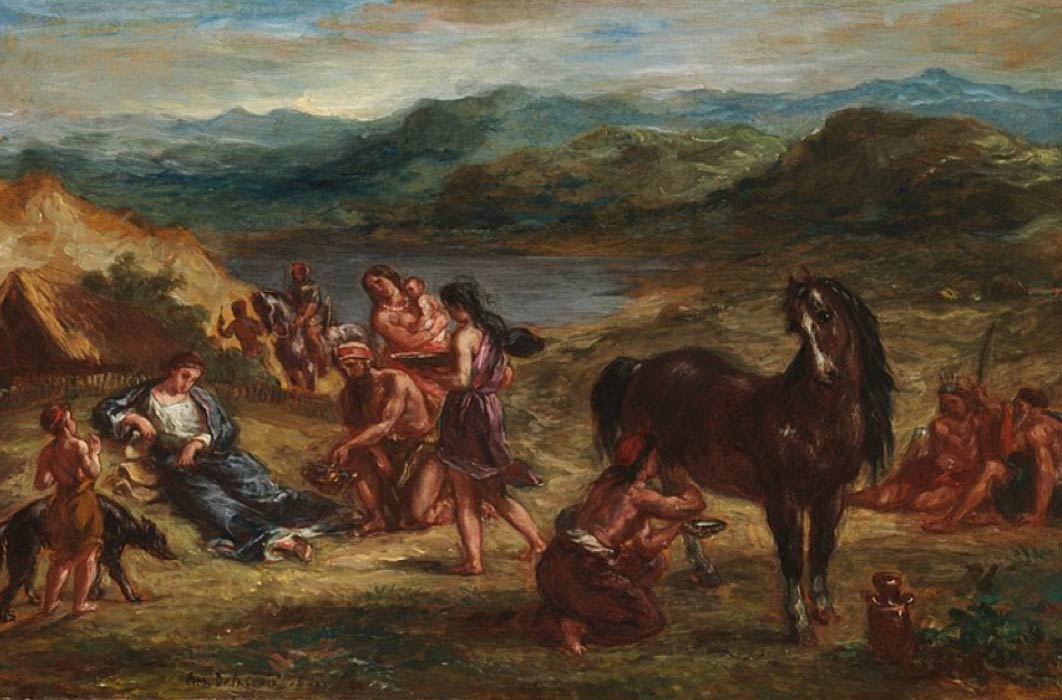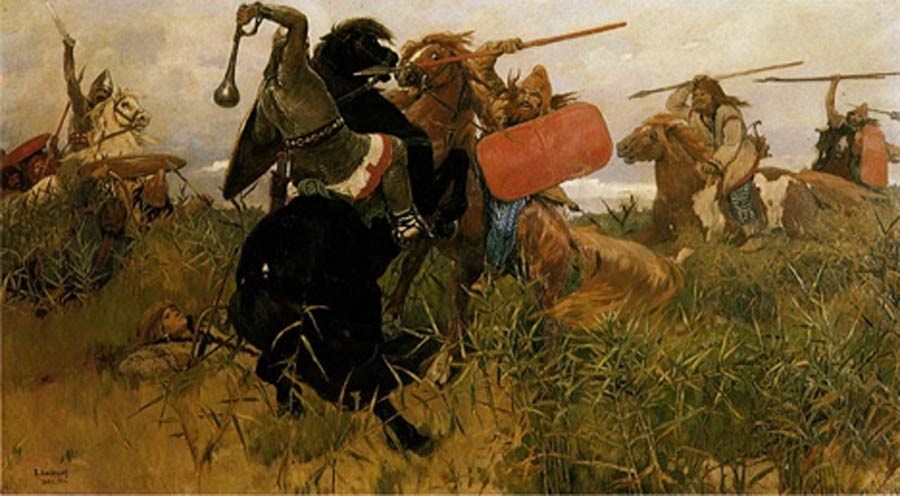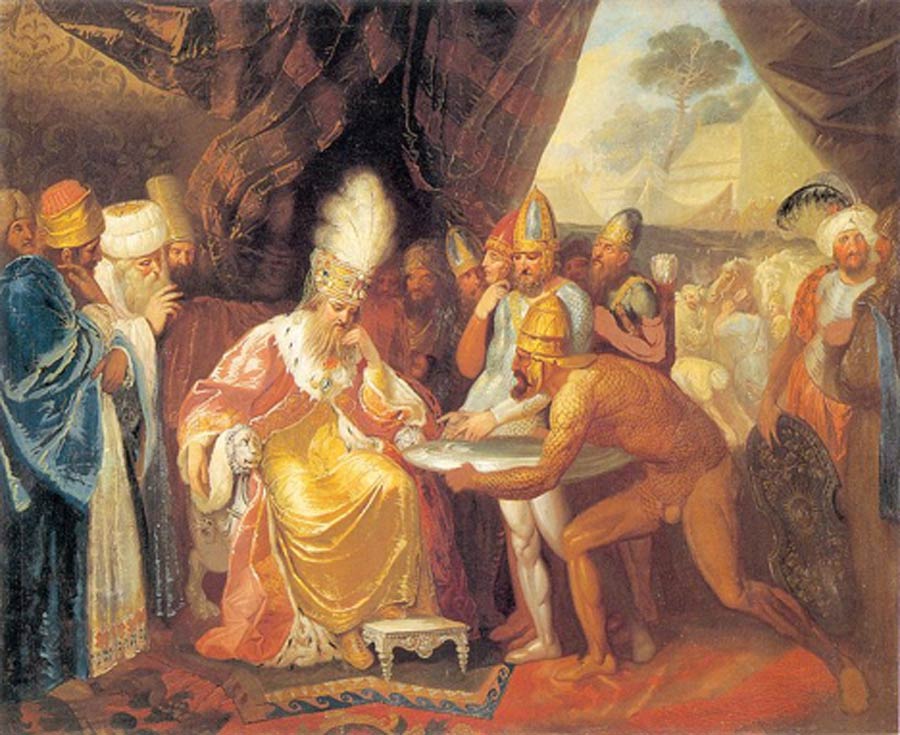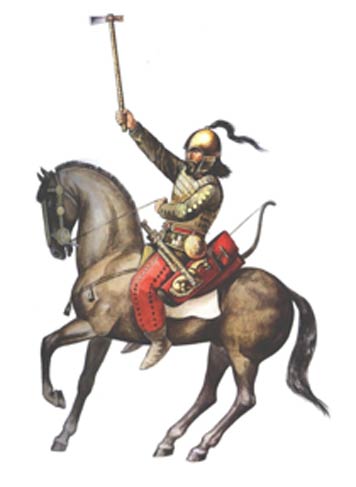
Scythian Priesthood of Fierce Fighting Eunuch Shamans of the Snake Goddess
The Scythian goddess Argimpasa was half-human, half-snake with a priesthood of powerful shamans, who despite their self-inflicted castration, seemed to still personify the reputation of fierce warriors. The culture of the Scythians, a group of ancient tribes of nomadic warriors who lived in what is now southern Siberia, flourished from around 900 BC to around 200 BC. However, most of what is known today about the Scythians has been accumulated from a range of ancient sources from other cultures such as the Greeks, Assyrians and Persians who would, understandably, retell the stories of the Scythians from their own perspectives colored by their own understandings, traditions and sometimes prejudices.

Battle between the Scythians and the Slavs by Viktor Vasnetsov (1881) (Public Domain)
Mythological Origins of the Scythians
An ancient legend told that Targitaus, a supernatural being who dwelled in the Black Sea domain, had three sons. Together, the three brothers ruled the land until four golden implements fell from the sky. The implements were a plow, a yoke, a battle-ax and a drinking cup. Suddenly, the four implements began to blaze. Out of the three brothers, it was Colaxais, the youngest brother, who was the only one able to pick up the burning objects. Thus, Colaxais became the first sole ruler of the Scythian kingdom.
Diodorus provides another version of the origin of the Scythians by claiming that: “Born in that land from the conjugal union of Zeus and a snake-legged goddess was a son Scyth, who gave the people the name Scythian.” Somewhat similar to Diodorus’ version of the origin of the Scythians, an epigraphic version of the origin of the Scythians said that Heracles would unite with Echidna. This union produced two offspring - Agathyrsus and Scythes, who became the progenitors of Scythians.

Scythian emissaries meeting with Darius by Franciszek Smuglewicz (1745–1807) Lithuanian Art Museum (Public Domain)
Tribal Customs and Fierce Reputations of the Scythians
As knowledge about the Scythians is scarce, one can mostly only be content with second-hand accounts and scattered clues about their pantheon of deities and religious practices. Another problem with understanding the earliest Scythians is that they did not develop their distinctive art style until the sixth century BC. Historically, the Scythians was first recorded in the seventh century BC as an ally of Assyria against the Cimmerians. The Scythian king Partatua married an Assyrian princess in 674 BC and the two nations’ alliance was firmly settled. In the fourth century BC, the Scythian kingdom peaked at its highest economic, political, social and cultural development. King Atheas united all the Scythian tribes and expanded his territory to the Thracian border on the right bank of the Danube. In 339 BC, Atheas was killed in a battle with Philip of Macedon at the age of 90 years. However, the Scythian kingdom continued to be strong and wealthy until the Celts and the Thracians swept in from the west and the Sarmatians from the east at the second half of the third century BC.

Warrior of Scythians, second part of seventh and sixth century BC (CC BY-SA 3.0)




